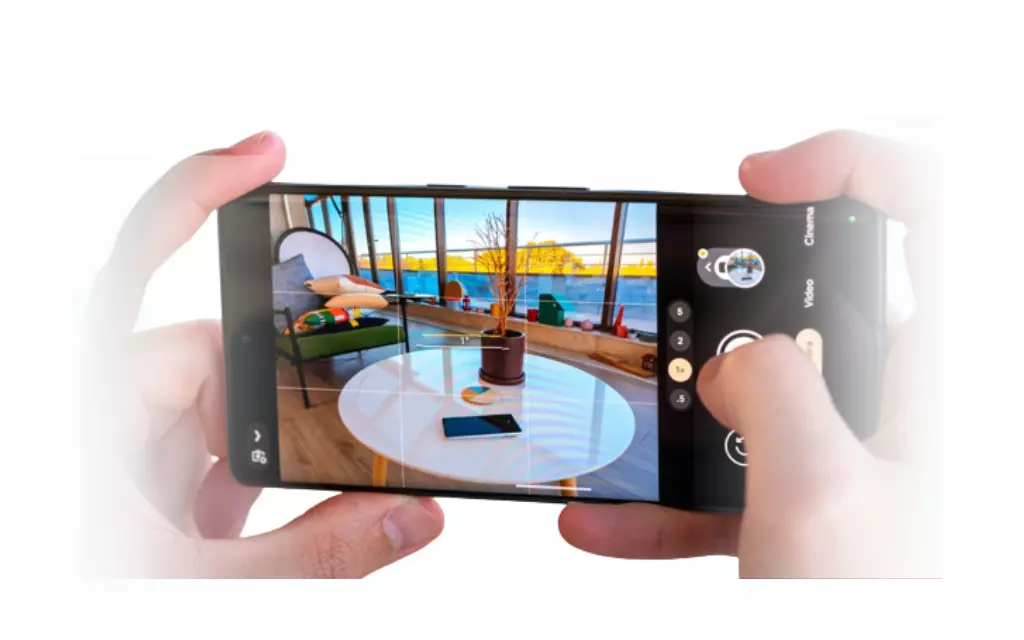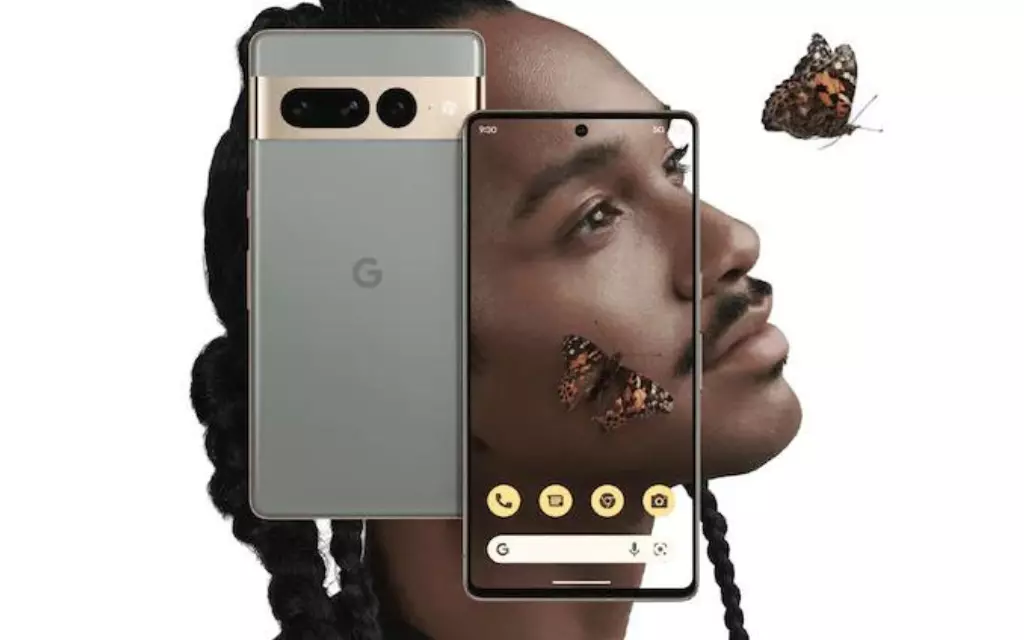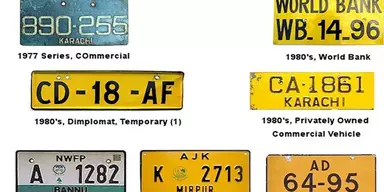The Pixel 7 Pro is on a mission. Many of us were surprised by how reasonably priced the Pixel 6 was when Google introduced its first-generation Tensor-powered handsets last year. There’s little question that the Google Pixel 7 pro will get as much attention as its predecessor, given that it costs $600, which is still very low for a flagship. This comparison was a clear winner, as the less expensive phone was the better buy.
Google’s phablet-sized flagship Pro model is back for a second year, with pricing frozen at last year’s levels. The Pixel 7 Pro price in Pakistan is very high. Still, it has many advantages over its lesser sibling, the Pixel 7: a more polished design, a superior telephoto lens, and an even more impressive ultra-wide sensor. But whether or not that’s sufficient to earn you an additional $300, or whether or not you’d instead use that money to buy a brand new Pixel Watch, is another matter entirely.
The Pixel 7 Pro is an advance over last year’s flagship model in some essential respects; this is especially true in the photography department, where some of the Pixel 7 Pro’s new features may sway even the most dedicated photographers to make the jump. However, there is lots of space for improvement in future Google products, such as the battery life and some dubious design decisions.
Google Pixel 7 Pro Price in Pakistan
The projected starting price of the Google Pixel 7 Pro price in Pakistan is 209,999 PKR. The Google Pixel 7 Pro will be available in three different memory and storage configurations: 12 GB RAM/ 128 GB Storage, 12 GB RAM/ 256 GB Storage, and 12 GB RAM/ 512 GB Storage.
How to Get the Google Pixel 7 Pro and What Networks It Will Work With
Google’s largest launch to date, at least internationally, is the Pixel 7 series. This year, the Pixel 7 Pro may be purchased in the United States (US), Canada (Canada), Australia (Australia), Denmark (Denmark), France (France), Germany (Germany), India (India), Italy (Italy), Japan (Japan), the Netherlands (The Netherlands), Norway (Norway), Singapore (Singapore), Spain (Spain Since the Pixel 3 in 2018, this is the first major Pixel release in India.
In the United States, you may get it via any of the three major carriers, Google Fi and some MVNOs. Unlocked phone versions are also available for purchase through the Google Play Store or from other retailers for usage with any GSM carrier. With the Pixel 7 Pro price in Pakistan, mmWave is included at no extra cost, unlike other Pixel phones. There are no required add-on SKUs, as it is standard on all models. The Pixel 7 Pro price in Pakistan and the US begins at $899 for the 128GB model, the same as the Pixel 6 Pro from 2017. Prices range from $999 for the 256GB version to $1,099 for the 512GB version.
Design of the Google Pixel 7 Pro
In 2022, almost all of the major smartphone manufacturers released incremental updates to their prior flagship models rather than putting forward significant resources on an entirely new approach. The recently released flagship smartphones have had incremental improvements over their predecessors. This includes the Galaxy S22, the Galaxy Z Fold 4 and Z Flip 4, the OnePlus 10 Pro, and the iPhone 14 series from Apple. Google is no exception; the Pixel 7 Pro appears practically identical to the 6 Pro at first glance, with all of the advancements hidden in the phone’s finer components.
The camera control pad has undergone the most noticeable modification. The black visor that spawned so many internet jokes among tech enthusiasts is no more. Instead, Google has gone with a frame-matching metal cover for the camera bar (give or take a couple of antenna lines). It’s a vast improvement; the Pixel 6 and 6 Pro always seemed incomplete to me in this respect. This is not just an aesthetic improvement but a functional one; to address the lens flare problems that plagued previous year’s models, Google has included three cutouts in the metal-wrapped camera bar for the lenses and flash.
A year in, I’m still a fan of this basic design, even though I expect the camera bar to continue to be divisive among Pixel lovers. If a hump is necessary for cameras and other sensors on today’s flagship phones, it makes sense to spread that area over the whole device. The Pixel 7 Pro, in contrast to its rivals, does not sway from side to side when sitting on a desk. It also makes the phone more noticeable in a crowded space, making it easier to spot than the competitors.
Compared to the matte metal used in the Pixel 7, Google unfortunately elected to employ “polished” aluminum for the camera bar and frame of the Pixel 7 Pro. While it’s clear that “shiny” is the current premium material for selling smartphones to consumers, I can’t say I agree. This metal is quite a fingerprint and smudge-susceptible and already has scratches from everyday use. The only premium-feeling features are the matte volume rocker and power buttons.
The rear of the Pixel 7 Pro is constructed of glossy glass, much like last year’s model. However, this year’s model has a more uniform appearance thanks to eliminating the color contrast between the camera bar and the rest of the back. Seeing this design brings back painful memories of how much I miss the frosted glass of the Pixel 4. The white model should be able to conceal fingerprints and smudges rather well, but the black one I’m trying reveals them all. Over time, the oils from your palms might make the phone uncomfortable to grasp if you, like me, have sweaty or damp hands. You can tell that this high-gloss coating was designed for show purposes alone and not for handling.
Display on the Google Pixel 7 Pro

The display curves to meet the metal frame on the left and right sides, much as it did on last year’s Pro model from Google. Since many Pixel 6 Pro owners found the curved screen awkward, Google toned down the curvature on the Pixel 7 Pro. The end effect is a phone that’s somewhat more comfortable to carry than its predecessor, but it leaves me wondering why Google didn’t go all the way.
When seen from the side, it is clear that the Pixel 7 Pro’s display does not completely encase the device, leading to narrow side and top and bottom bezels. Despite its smaller display, the 7 Pro is more significant than its predecessor by.7 mm overall (or .25mm). Despite both phones having a 6.7-inch screen, the Pixel 7 Pro is just a millimeter wider than the iPhone 14 Pro Max, making it one of the only contemporary “large” flagship phones with a flat screen.
Equipment And Accessories Included With The Google Pixel 7 Pro

Aside from the screen, the remainder of the phone’s fit and finish help establish it as a high-quality piece of hardware, but one that may fall short of the standards set by similar devices in this price bracket. The volume rocker and power button have a satisfying click and tactile feel, but they seem less secure than the Galaxy Z Fold 4. My dominant thumb naturally rests on the rocker when holding the phone. To activate the screen or launch the camera app, I have to juggle the bulky, slick phone down my hand, which is why I wish Google had lowered the buttons a little lower.
Very high-quality stereo speakers can be turned up to an audacious level without distorting and have a respectable amount of bass to prevent coming across as tinny. For light viewing of YouTube videos or even a late-night movie in bed, a pair of excellent Bluetooth earbuds will still serve you well if you’re prepared to invest some more cash; Google would love to sell you a set of Pixel Buds Pro.
Disappointingly, the Pixel 6 retains some of the device’s previous problems with audio balance. When I turn the phone horizontally with the side buttons facing up, I notice a tiny improvement in sound quality. For some reason, I sense it much more strongly when the phone is turned around. You may need to change how you hold your phone while viewing movies or playing games to prevent accidentally muting the right channel, as your palm or thumb quickly covers the single bottom-firing speaker.
The extended earphone that runs along the top of the screen is well concealed by Google’s design. I was not a fan of the earpieces on last year’s phones, but Google’s Pixel 7 Pro pleasantly surprised me. It is undetectable in low light because it perfectly matches the phone’s case. The tiniest speaker will likely become visible in broad daylight. This feature is less subtly hidden on my black Pixel 7 Pro, but it may stand out more on the white or hazel variants.
Biometrics
Let’s discuss biometrics, a problem area for the Pixel 6 line. Many writers have had cramps in their fingers discussing the slow in-display fingerprint sensor on the Google Pixel 6 and 6 Pro. It was sluggish to unlock and unstable for regular usage for the first several months after its release. Google’s Pixel 6 regularly failed to identify fingerprints, an embarrassing problem the company attributed to “improved security algorithms.” That wasn’t the case; after multiple software updates, the sensor is still subpar.
It appears that Google has things under control after making minor upgrades to the Pixel 6a earlier this year. The sensor from this year is significantly improved over last year’s, albeit it’s still far from flawless. If you’ve been using a Pixel 6 for the previous year, you’ll notice that it unlocks your phone somewhat quicker than it did last year.
Pixel 7 Pro, Google’s Latest Smartphone, and Its Enhanced Software
As expected, Android 13 is already installed on the factory settings of the Pixel 7 Pro. Similar to how the Pixel 7 Pro might not be as thrilling as its predecessor, this update isn’t as exciting as Android 12, but it’s still packed with valuable tweaks that improve the user experience.
The revamped music player on the lock screen is still one of my favorite additions; the funky playback bar reminds me of the kinds of vintage “fun” features only Google can create. Material You is better now than ever, but it will not feel complete until most significant third-party apps have dynamic-themed icons. Google’s integration of a single search bar into the home screen and the app drawer is a considerable improvement, providing users with both online and on-device results in one convenient location.
As of two months ago, Android 13 has been released for two months, with the beta program beginning in the spring. It’s a tried and true method, for better or worse, and I think it works rather well. The Pixel 7 Pro will receive Android 14 in the second half of 2023, making it too early to speculate on what Google has planned for the operating system.
Comparison of Google Pixel 7 Pro’s Processing Power, Battery Life, and Charging Times
Tensor G2, Google’s second-generation proprietary SoC, is responsible for the high Pixel 7 Pro price in Pakistan but has impressive software advancements. It’s no secret that Google’s departure from Qualcomm contributed to the shaky launch of the Pixel 6 and 6 Pro last year.
Compared to the Pixel 6 Pro processor, the differences between Tensor G2 and that chip are minimal. Two Cortex-X1 cores and four Cortex-A55 cores are still used in the CPU, with the A76 cores being replaced with two Cortex-A78 souls. Clock speed has been tweaked ever-so-slightly on the X1 hearts to boost performance. Using it daily, I did not notice any changes, but then, I never considered the Pixel 6 to be particularly sluggish. No alterations have been made to the fact that it is built using Samsung’s 5nm technology.














